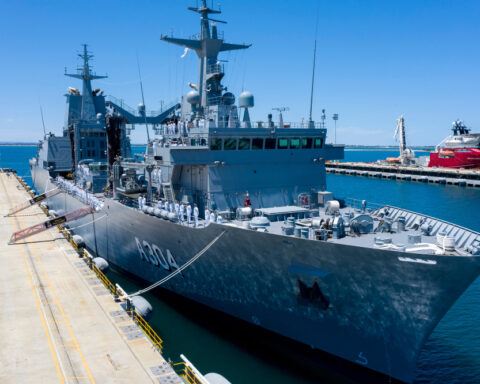
KUALA LUMPUR – Sixteen aircraft from the People’s Liberation Army Air Force conducted a large-scale transport formation exercise over the South China Sea near Borneo on Monday and entered the airspace of Malaysia’s exclusive economic zone (EEZ), the Royal Malaysian Air Force (RMAF) said in a statement today.
RMAF said its radar station in the East Malaysian state of Sarawak detected the aircraft on Monday at 11:53 a.m. local time and that the aircraft were in a tactical trail formation spanning 60 kilometers, or approximately 37 miles. The aircraft were flying at a height of 23,000 to 27,000 feet and a speed of 290 knots through the Singapore Flight Information Region (FIR) before crossing into the airspace of Malaysia’s EEZ and Kota Kinabalu FIR (KK FIR).
As the aircraft headed in the direction of Malaysia’s national airspace, the RMAF put the Hawk 208 fighter aircraft – part of No. 6 Squadron at RMAF Labuan airbase on Labuan island – on alert while trying to contact the PLAAF aircraft. No.6 Squadron is the RMAF’s fighter squadron permanently based in East Malaysia, though four plane detachments of F/A-18 Hornets from No.18 Squadron and Sukhoi Su-30MKMs from No.12 Squadron are rotationally deployed from Peninsular Malaysia into RMAF Labuan. It is not known if such a detachment was present at that time.
After not receiving a response, the RMAF launched the Hawks at 1:33 p.m. to intercept and conduct visual examination. The RMAF did not state how many Hawks it launched, but the standard intercept pattern for the RMAF is two aircraft. Visual identification confirmed the aircraft as Illuysin IL-76s and Xian Y-20s transports.
The formation, followed by the RMAF fighters, continued on past the Luconia Breakers, coming as close to as 60 nautical miles off the Sarawak coastline before turning back. Luconia Breakers has been an area claimed by China and China maintains a continuous rotating presence of a China Coast Guard vessel in the area, while the Malaysian Coast Guard, RMAF and Royal Malaysian Navy continuously monitor such presence.

The RMAF also released a map showing the path of the aircraft along with pictures taken during the intercept and stated that the incident posed a threat to both national sovereignty and flight safety given the air traffic in the KK FIR.
Malaysia has had a number of such incidents by PLAAF and People’s Liberation Army Navy (PLAN) aircraft in the area, though this is the first incident involving a large number of aircraft. Most of the incidents were not publicly reported and the public statement released by the RMAF is a departure from the norm.
Parts of the waters off East Malaysia and Malaysia’s Spratly Island claims fall under China’s Nine-Dash Line claims.
Budgetary constraints have resulted in the RMAF inability to replace its aging and small combat aircraft fleet, though maritime surveillance capabilities are expected to improve once a U.S-funded conversion of three of the RMAF’s CN-235 transports into maritime surveillance aircraft is complete. The first aircraft is slated to finish its conversion this year. Six Scan Eagle Unmanned Air Vehicles were provided to Malaysia last year as part of the Maritime Security Initiative program, with an additional 12 to be delivered.





